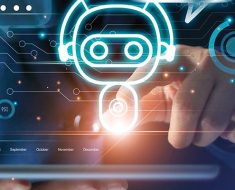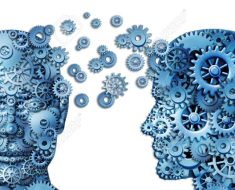Artificial intelligence is the simulation of human intelligence in machines that are programmed to think like humans and can mimic their actions. It also refers to traits that are associated with human minds such as learning and problem- solving which exhibits by a machine. Research in AI is one of the most exciting fields in tech. AI is divided into two categories based on capabilities and functionalities. Under Functionalities, there are four types of AI that are reactive machines, limited theory, theory of mind, and self-awareness. Under Capabilities, there are three types of artificial intelligence that is Narrow AI, General AI, and Super AI.
AGI is an intelligent system with comprehensive and cognitive. True AGI can do virtually anything a human can do. They have advanced deep learning capabilities that are ahead of humans’ naturally gained abilities. Some characteristics possessed by artificial general intelligence are: problem-solving, creativity, self-awareness, empathy, abstract thinking, perception, communication, ability to adapt to new environments, ability to learn from past experiences, ability to recall and relive memories, and ability to plan for the future. We can’t be sure of its potential but here are the practical examples of five capabilities of AGI.
1. Creativity: Artificial General Intelligence System will read, comprehend and improve the code generated by humans.
2. Sensory Perception: Artificial General Intelligence will excel at color recognition, which is a subjective kind of perception.
3. Motor Skills: Grabbing a set of keys from a pocket involves a level of imaginative perception.
4. Natural Language Understanding (NLU): Artificial General Intelligence Systems would possess a level of intuition that would enable Natural Language Understanding.
5. Navigation: Today GPS can pinpoint a geographic location. Once fully developed, AGI would be able to project movement through physical spaces better than existing systems.
Things AGI can do are eliminate monotonous tasks, improve efficiency, complete dangerous jobs, disaster management, etc
The AI which exists now is narrow or weak AI. It is used for many applications that we are using in our daily life some examples are self-driving cars, facial recognition, internet recommendations, etc. It is defined as narrow or weak AI because these systems can only perform specific actions and commands. The human species currently dominates other species because the human brain has many distinctive capabilities. If AI surpasses humanity in general intelligence and becomes superintelligence, then it could become impossible or difficult for humans to control.
Conclusion: AI researchers cannot make significant progress in real-world domains. Identifying the right paths in this field requires accurate and meaningful partnerships across all disciplines. This will help develop a common scientific approach to using and navigating AI during society’s most urgent needs. The next decade will play a crucial role in accelerating the development of AGI. In fact, experts believe that there is a 25% chance of achieving human-like AI by 2030. Advancements in robotic approaches and machine algorithms, paired with the recent data explosion and computing advancements, will serve as a fertile basis for human-level AI platforms. Now, it is only a matter of time until AGI becomes a part of the new normal.





